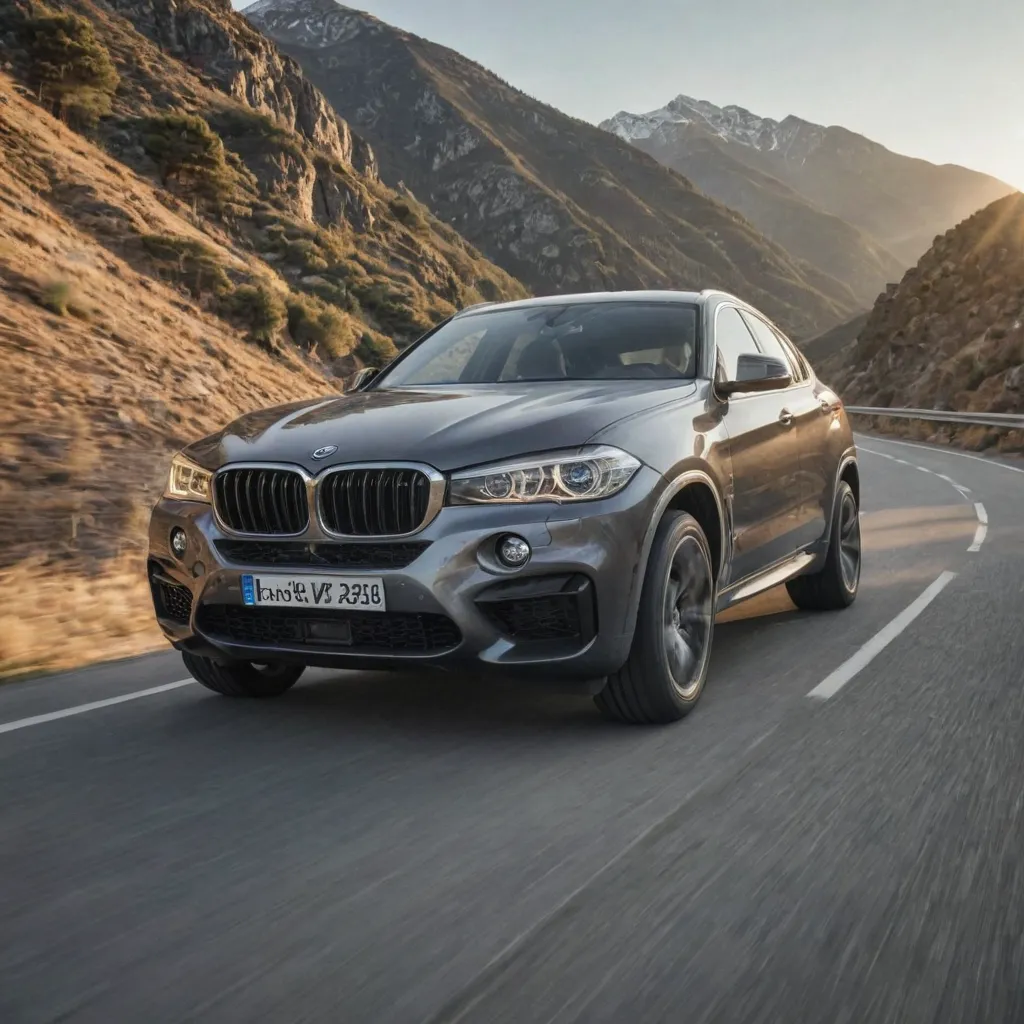
The Myth of BMW X6 Performance
The BMW X6 is often touted as a high-performance luxury SUV, but the reality is a bit more nuanced. While the X6 does offer impressive power and handling capabilities, there are several factors that often contribute to the perception of it being faster than it truly is. Understanding these factors can help X6 owners manage their expectations and potentially unlock more performance from their vehicles.
One of the primary reasons the X6 may not feel as fast as expected is its substantial curb weight. As a large, heavy SUV, the X6 carries a significant amount of mass, which can blunt its acceleration and top-end speed, especially when compared to lighter, more nimble sports cars. This weight also places a greater demand on the braking system, making it feel less responsive than a lighter vehicle.
Additionally, the X6's all-wheel-drive system, while providing excellent traction and stability, can also contribute to a perceived lack of responsiveness. The power delivery in an all-wheel-drive system is often more gradual and smooth, rather than the more immediate and direct feel of a rear-wheel-drive setup. This can make the X6 feel less "eager" to accelerate, even if its 0-60 mph times are respectable.
Another factor to consider is the X6's suspension tuning. While BMW engineers have done an admirable job of balancing comfort and performance, the X6's suspension is primarily focused on providing a smooth, composed ride, rather than an overly raw, track-focused feel. This can lead to a sense of the vehicle feeling less "connected" to the road, which can diminish the perception of its performance capabilities.
Finally, the X6's large, heavy wheels and tires, while providing excellent grip and stability, can also contribute to a sense of the vehicle feeling less agile and responsive. The additional unsprung weight and rotational inertia of these components can make the X6 feel more ponderous and less eager to change direction than a lighter, more nimble vehicle.
Factors That Limit the X6's Acceleration
The BMW X6 is a powerful and dynamic SUV, but its acceleration capabilities may not live up to the expectations of some drivers. Several factors contribute to the limitations in the X6's acceleration, which is crucial information for enthusiasts seeking maximum performance from their vehicle.
One significant factor is the X6's weight. As a large and heavily-equipped SUV, the X6 carries a substantial curb weight, which can hamper its ability to rapidly accelerate. The vehicle's size and design, including features like all-wheel drive and a spacious interior, add significant mass that the engine must overcome. This additional weight can result in slower off-the-line performance and reduced responsiveness when compared to lighter, more nimble sports cars or sedans.
Another limiting factor is the X6's powertrain configuration. While BMW offers several potent engine options for the X6, including turbocharged inline-six and V8 units, the sheer size and mass of the vehicle can still pose a challenge. The engine must work harder to propel the X6 from a standstill or during rapid acceleration, ultimately limiting its overall acceleration capabilities.
Aerodynamics also play a role in the X6's acceleration performance. The SUV's tall, boxy design creates more air resistance at higher speeds, which can reduce the vehicle's top-end acceleration and top speed. This aerodynamic drag can be especially noticeable when the X6 is compared to more streamlined, performance-oriented vehicles.
Finally, the X6's transmission, whether a traditional automatic or the available dual-clutch setup, can also impact acceleration. The gear ratios, shift speeds, and overall efficiency of the transmission system can influence how quickly the vehicle can build speed and reach higher velocities.
Unlocking the True Potential of Your X6
The BMW X6 is a remarkable SUV, but many owners don't realize the full extent of its capabilities. With a few strategic upgrades and adjustments, you can unleash the true power and performance that lies beneath the surface. Let's dive into the details and explore how you can optimize your X6 for a thrilling driving experience.
One of the most important factors in unlocking the X6's potential is the engine. While the stock powertrain is impressive, a carefully tuned ECU (Engine Control Unit) can unlock a significant boost in horsepower and torque. Professional tuning services can reprogram the ECU, adjusting parameters like fuel injection, ignition timing, and boost pressure to maximize the engine's output. This simple modification can transform the way your X6 responds to the throttle, delivering a noticeable increase in acceleration and overall responsiveness.
Another area to consider is the exhaust system. The factory exhaust on the X6 can be restrictive, limiting the engine's ability to breathe freely. Replacing the exhaust with a high-performance system, complete with larger diameter pipes and a less restrictive muffler, can release the engine's true potential. This not only enhances power and torque but also gives your X6 a more aggressive, exhilarating sound that will thrill your senses every time you get behind the wheel.
Suspension upgrades are also crucial for unlocking the X6's dynamic capabilities. The stock suspension, while designed for a comfortable ride, may not provide the precise handling and responsiveness that enthusiasts crave. Investing in a set of high-performance shocks and springs, or even a complete coilover system, can dramatically improve the X6's agility and cornering abilities. These upgrades will allow you to carve through twisty roads with confidence and precision, further enhancing the overall driving experience.
Brakes are another area that deserves attention. The X6's stock braking system is capable, but for those seeking maximum performance, upgrading to a high-performance brake kit can make a significant difference. These kits typically feature larger, vented discs and more powerful calipers, providing superior stopping power and fade resistance, especially during spirited driving or track use.
Mastering Driving Techniques for the X6
As a powerful and versatile luxury SUV, the BMW X6 demands a refined driving approach to truly unlock its performance potential. While the vehicle's engineering and design play a significant role, the driver's skill and technique are equally crucial in maximizing the X6's capabilities. In this section, we'll explore the key driving techniques that can help you harness the full potential of your BMW X6.
One of the fundamental aspects of driving the X6 is understanding its weight distribution and center of gravity. The X6's unique coupe-like silhouette and high-riding stance require a different driving style compared to traditional sedans or SUVs. Smooth, gradual inputs on the steering, throttle, and brakes are essential to maintain control and stability, especially during cornering and high-speed maneuvers. Abrupt or jerky inputs can unsettle the vehicle and lead to unpredictable behavior.
Mastering the art of weight transfer is another critical skill for X6 drivers. When accelerating, braking, or changing direction, the vehicle's weight shifts significantly, affecting the available grip and traction. Anticipating these weight transfers and adjusting your driving accordingly can help you maintain composure and maximize the X6's performance. For instance, during hard braking, a smooth and progressive application of the brake pedal can help transfer weight to the front wheels, enhancing the vehicle's stability and stopping power.
Cornering technique is paramount when driving the BMW X6. The vehicle's size and weight can make it feel less nimble than some of its smaller counterparts. However, by adopting a smooth and controlled approach to cornering, you can unlock the X6's true handling potential. Aim to carry as much speed as possible into the corner while maintaining a steady, consistent throttle input. Avoid sudden or excessive steering inputs, which can unsettle the vehicle and lead to understeer or oversteer. Instead, focus on gradual, precise steering adjustments to carve through the turn with confidence.
Another important aspect of mastering the X6 is understanding the role of the vehicle's electronic systems, such as the Dynamic Stability Control (DSC) and the available driving modes. These systems are designed to enhance the vehicle's handling and stability, but they can also be tailored to your driving preferences. Familiarize yourself with the various driving modes and how they affect the X6's responsiveness, throttle sensitivity, and stability control interventions. Experimenting with different settings can help you find the optimal balance between performance and safety for your driving style.















